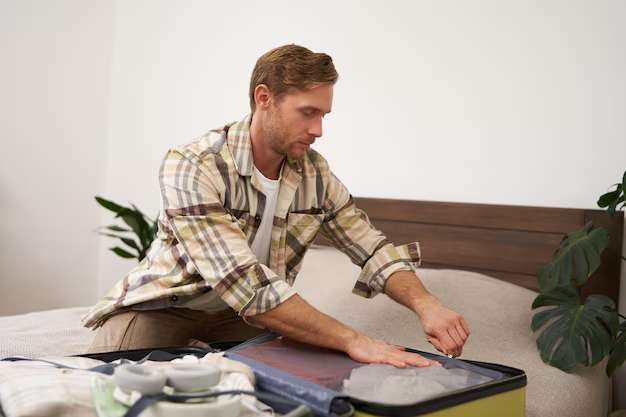Keeping Your Fridge in Place: How to Stop Your Refrigerator from Rolling
A steady, motionless refrigerator is not just about aesthetics—it’s about safety, efficiency, and convenience. If your fridge wobbles every time you open the door, it might feel more like a nuisance than a reliable kitchen companion. Let's delve deep into how you can keep your refrigerator securely in place and enhance your kitchen's functionality with some DIY solutions.
Understanding the Problem of a Rolling Refrigerator
Why Do Refrigerators Roll?
Many modern refrigerators come with wheels or casters for easy mobility. While useful for moving the appliance during cleaning or relocation, these wheels can cause your refrigerator to move unexpectedly.
Common Causes
- Uneven Flooring: If your kitchen floor is slightly inclined or uneven, the fridge might roll.
- Improperly Set Wheels: The wheels may not be correctly positioned or locked.
- Frequent Door Usage: Constantly pulling on the refrigerator door can shift it over time if it's not properly stabilized.
How a Rolling Fridge Affects You
A rolling refrigerator can create several inconveniences:
- Safety Hazard: Risks tipping over, especially with young children around.
- Energy Efficiency: A shifting fridge can misalign with the surrounding cabinetry, affecting insulation.
- Appliance Longevity: Excessive rolling might lead to wear and tear, reducing its operational life.
Steps to Secure Your Refrigerator
Level the Refrigerator
Leveling is the first step to prevent rolling. A leveled refrigerator not only stays in place but also operates efficiently. Here’s how you can do it:
- Gather Your Tools: You’ll need a level, screwdriver, and possibly a wrench.
- Check the Fridge's Position: Place a level on top to see if it's balanced left to right and front to back.
- Adjust the Feet or Wheels:
- Locate the Adjustment Mechanism: Typically found at the front base of the appliance.
- Use the Level: Adjust the leveling legs or rear rollers based on the level's reading.
Pro Tip:
For consistent operation, the front should be slightly higher than the back, allowing doors to swing closed automatically if left ajar.
Lock the Wheels
Not all refrigerators have a wheel-locking mechanism, but if yours does, make sure it’s engaged.
How to Lock the Wheels:
- Locate the Wheel Locks: These are often found on the front wheels.
- Engage the Locks: Use the locks to keep the fridge steady.
Add Friction Enhancers
If the built-in mechanisms are inadequate:
- Use Rubber Wedges: Slide these under the wheels to create friction and stability.
- Try an Anti-Slip Mat: Placing a mat under the fridge can prevent it from sliding on smooth surfaces.
Explore Anchoring Solutions
In some instances, securing your fridge in one spot might be the best solution.
- Shelf Anchors: Attach the fridge to the wall or cabinetry with brackets.
- Safety Straps: These hold the refrigerator safely in place, preventing unwanted movement.
Enhancing Stability Through Maintenance and Design
Regular Maintenance Tips
Consistent maintenance can also help in keeping your fridge steady:
- Check Wheel Alignment: Wheels may become misaligned over time. Recheck their position periodically.
- Inspect Flooring Beneath: Ensure nothing underneath is affecting balance, like accumulated dust or debris.
Design Considerations
When planning a new kitchen layout or purchasing a new fridge, consider design elements:
- Floor Leveling: Address any flooring discrepancies during installation.
- Proper Placement: Ensure adequate space for the fridge, avoiding cramped placements where it can get bumped frequently.
Related Measures to Enhance Kitchen Safety
While securing the fridge is crucial, consider these additional steps to ensure a safer kitchen environment:
Ensure Adequate Spacing
- Maintain space around your fridge for ventilation and easy access.
- Easy Access: Avoid cramming so you can reach the plug for maintenance confidently.
Reinforce Heavy Duty Appliances
In a busy kitchen environment, it's not just the fridge that may need stabilizing. Look into securing other large appliances:
- Ovens and stoves can also require leveling and anchoring.
- Dishwashers and microwaves may benefit from anti-slip mats.
Embrace Future-Proof Solutions
Invest in modern technology:
- Smart Fridges: Some models offer enhanced stabilization features, such as smart sensors that detect imbalance and adjust automatically.
Quick Recap: Keeping Your Fridge Steady 🗂️
Here's a handy summary to keep your refrigerator steady and secure:
- Level the Fridge: Use a level to adjust the feet or wheels.
- Lock Those Wheels: Engage any available wheel locks.
- Enhance Friction: Utilize rubber wedges or anti-slip mats.
- Anchor When Needed: Use brackets or safety straps for permanent solutions.
- Practical Design: Ensure adequate space and address flooring issues.
Conclusion: Take Control of Your Kitchen's Efficiency
Keeping your refrigerator from rolling away isn't just about convenience—it's about safety and maintaining the efficiency of your kitchen environment. By employing the strategies outlined above, you can enjoy a stable, efficient appliance that operates smoothly and fits seamlessly into your household routine. Remember, addressing the root causes like level surfaces and proper placement will pave the way for a well-organized and safer kitchen.
